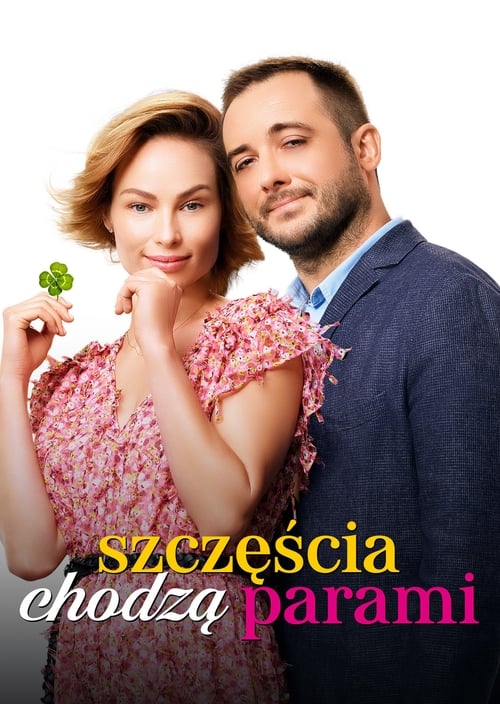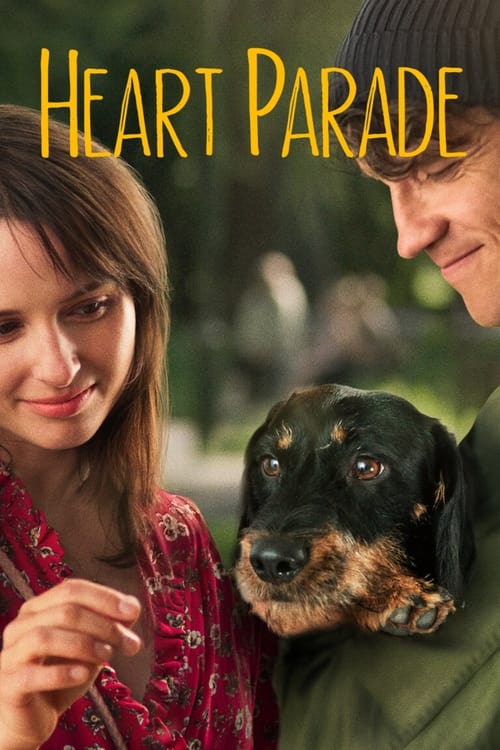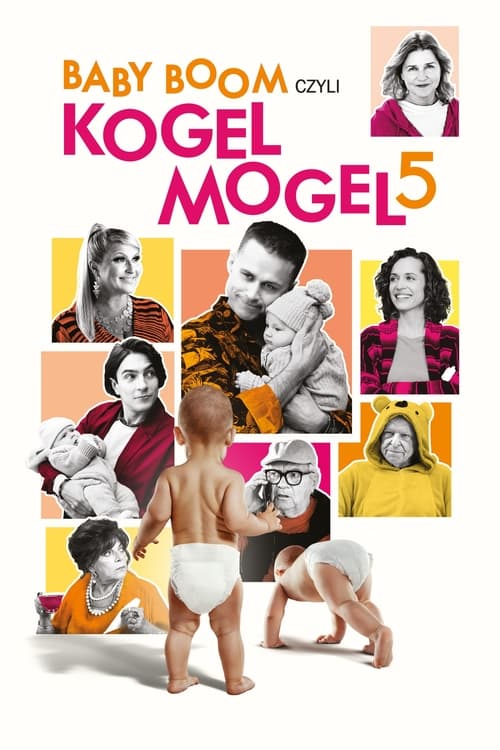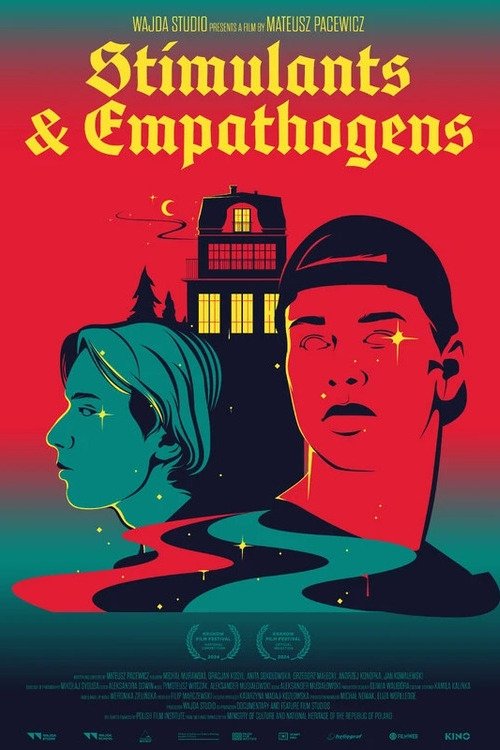
Ask Your Own Question
What is the plot?
What is the ending?
In the ending of "Szczęścia chodzą parami," the main characters come to terms with their relationships and personal choices. After a series of misunderstandings and emotional confrontations, they find clarity and resolution. The film concludes with a sense of hope and new beginnings for each character.
As the final act unfolds, we see the characters navigating the aftermath of their conflicts. The scene opens in a cozy café where the protagonist, Ania, sits at a table, her expression a mix of anxiety and determination. She reflects on her tumultuous journey, the love she has lost, and the friendships that have been tested. The camera captures the soft light filtering through the window, symbolizing the dawn of a new chapter in her life.
Next, we transition to a park where her love interest, Marek, is seen jogging. He pauses, taking a moment to breathe in the fresh air, contemplating his feelings for Ania. The internal struggle is evident on his face as he grapples with the mistakes he has made. The scene shifts to a flashback of their earlier moments together, filled with laughter and joy, contrasting sharply with the tension that has developed between them.
Back at the café, Ania receives a text from Marek, asking to meet. Her heart races as she contemplates the possibility of reconciliation. The camera zooms in on her hand, nervously tapping the table, showcasing her vulnerability. She ultimately decides to go, driven by a mix of hope and fear.
The next scene takes place at a picturesque spot in the park where Marek waits. As Ania approaches, the atmosphere is thick with unspoken words. They exchange tentative greetings, and the tension is palpable. Ania's eyes reflect a blend of anger and longing, while Marek's demeanor is apologetic. They sit on a bench, and the conversation begins with awkward small talk before delving into deeper issues.
Marek expresses his regret for the misunderstandings that have driven them apart. He admits his fears and insecurities, revealing a side of himself that Ania had not seen before. Ania listens intently, her expression softening as she realizes the depth of his feelings. The dialogue is raw and emotional, filled with pauses that emphasize the weight of their shared history.
As they talk, the camera captures the changing light around them, symbolizing the shift in their relationship. Ania shares her own struggles, her voice trembling as she recounts moments of doubt and loneliness. The vulnerability they both display creates a bridge between them, allowing for a moment of connection.
In a pivotal moment, Marek reaches for Ania's hand, a gesture filled with sincerity. He asks for another chance, promising to be more open and honest. Ania hesitates, her heart torn between past pain and the possibility of a future together. After a moment of silence, she nods, tears welling in her eyes, signaling her willingness to try again.
The scene transitions to a montage of their renewed relationship, showcasing small, intimate moments: laughter over coffee, shared glances during walks, and quiet evenings spent together. The visuals are warm and inviting, contrasting with the earlier tension in their relationship.
Meanwhile, we see the fates of other characters. Ania's best friend, Kasia, has been on her own journey of self-discovery. In the final scenes, she is shown embracing her independence, pursuing her passion for art. The camera captures her painting in a sunlit studio, her expression one of contentment and fulfillment. This signifies her growth and the importance of self-love.
The film concludes with a group gathering of friends, including Ania, Marek, and Kasia, celebrating their renewed bonds. Laughter fills the air as they share stories and toast to new beginnings. The camera pans out, capturing the warmth of their friendship and the promise of happiness that lies ahead.
In the final shot, Ania and Marek share a lingering gaze, their hands intertwined, symbolizing their commitment to each other and the journey they have ahead. The screen fades to black, leaving the audience with a sense of hope and the understanding that happiness often comes from facing challenges together.
Is there a post-credit scene?
In the movie "Szczęścia chodzą parami," there is indeed a post-credit scene that adds a light-hearted twist to the film's conclusion. After the credits roll, the screen fades back in to a cozy café setting where the main characters, Kasia and Tomek, are seen sharing a dessert. The atmosphere is warm and inviting, with soft music playing in the background.
As they enjoy their treat, a playful banter ensues between them, highlighting their chemistry and the growth of their relationship throughout the film. Kasia, with a teasing smile, challenges Tomek to guess the secret ingredient in the dessert. Tomek, feigning deep concentration, makes a series of humorous guesses, each more outlandish than the last, which causes Kasia to burst into laughter.
The scene captures their playful dynamic, showcasing how they have learned to embrace each other's quirks. As they share a moment of genuine connection, the camera pans out, revealing other couples in the café, each engaged in their own intimate moments. This visual reinforces the film's theme of love and connection, suggesting that happiness truly comes in pairs.
The scene concludes with a light-hearted toast between Kasia and Tomek, raising their forks in celebration of their journey together, leaving the audience with a sense of warmth and hope for their future.
What are the main character's motivations throughout the film?
The main character, a young woman named Kasia, is driven by her desire for love and stability in her life. She struggles with the pressures of societal expectations and her own insecurities, which lead her to make choices that often conflict with her true feelings.
How does the relationship between Kasia and her best friend evolve?
Kasia's relationship with her best friend, Ania, is central to the story. Initially, they share a close bond, but as Kasia begins to pursue a romantic relationship that Ania disapproves of, tensions rise. This conflict forces both characters to confront their own desires and the nature of their friendship.
What challenges does Kasia face in her romantic pursuits?
Kasia faces numerous challenges in her romantic pursuits, including misunderstandings with potential partners, her own self-doubt, and the influence of her family and friends who have differing opinions on what she should want in a relationship.
How does the character of Marek impact Kasia's journey?
Marek, a charming but unpredictable man, enters Kasia's life and becomes a catalyst for her transformation. His carefree attitude and adventurous spirit challenge her to step outside her comfort zone, but his inconsistency also leads to emotional turmoil for Kasia as she grapples with her feelings for him.
What role does family play in shaping the characters' decisions?
Family plays a significant role in shaping the characters' decisions, particularly for Kasia. Her parents' expectations and their own romantic history influence her views on love and relationships, creating internal conflict as she tries to forge her own path while balancing familial obligations.
Is this family friendly?
"Szczęścia chodzą parami," produced in 2022, is a romantic comedy that explores themes of love, relationships, and personal growth. While the film is generally light-hearted and aimed at a broad audience, there are a few elements that may be considered objectionable or upsetting for children or sensitive viewers:
-
Romantic Relationships: The film features various romantic entanglements, including discussions about breakups and infidelity, which may be complex for younger viewers to understand.
-
Mature Themes: There are moments that touch on adult themes such as heartbreak, jealousy, and the challenges of maintaining relationships, which could be emotionally intense.
-
Language: Some scenes may include mild profanity or suggestive language that might not be suitable for younger audiences.
-
Emotional Conflict: Characters experience significant emotional turmoil, including sadness and frustration, which could be upsetting for sensitive viewers.
-
Social Situations: The film portrays social gatherings where misunderstandings and conflicts arise, which may include awkward or uncomfortable moments.
Overall, while "Szczęścia chodzą parami" is primarily a feel-good film, parents may want to consider these aspects when deciding if it is appropriate for children or sensitive individuals.























































